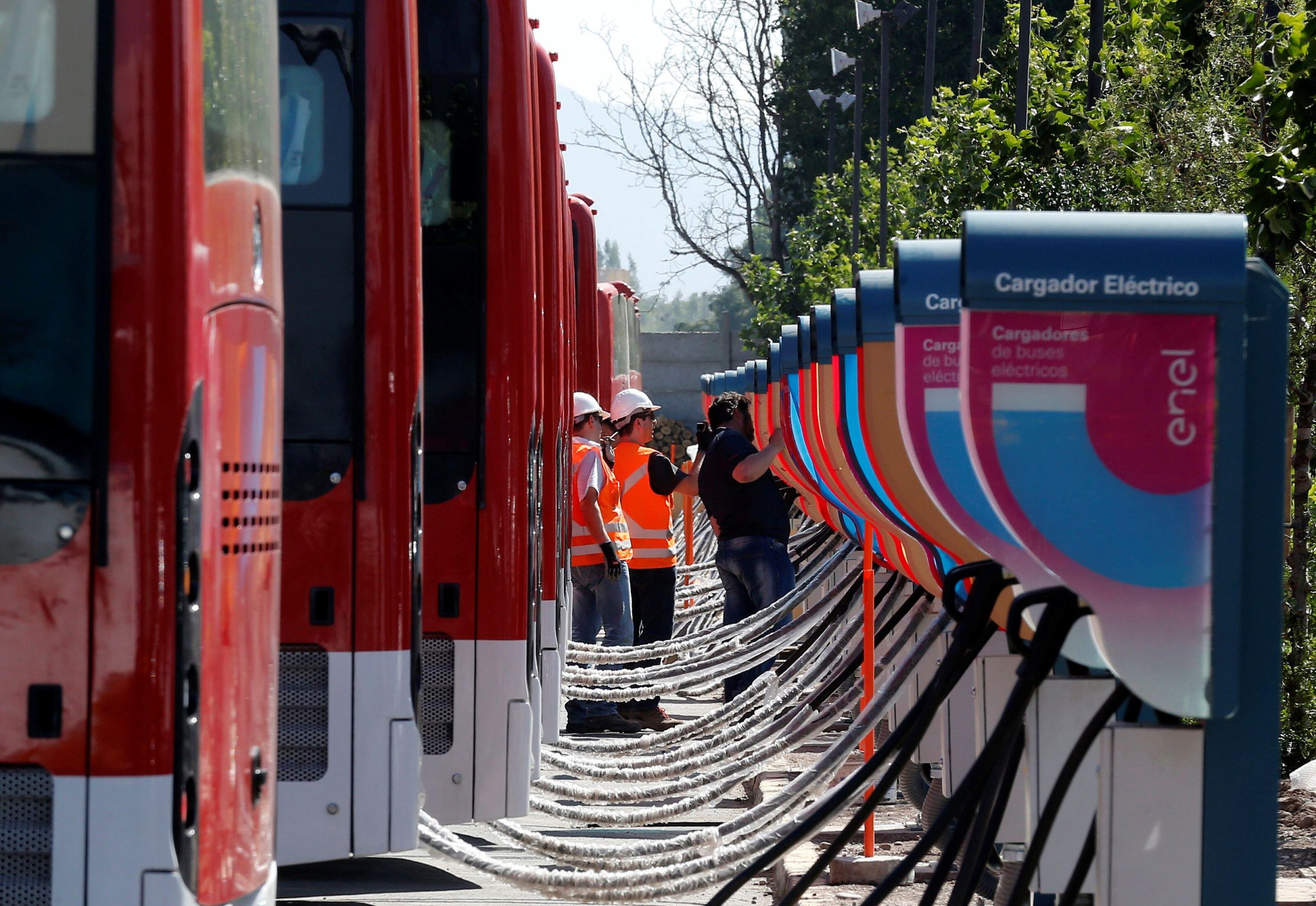“Today is a historic day for Chile: we have a new electromobility strategy, which allows us to accelerate our goals and align with international standards, acquiring the best practices and experiences needed for a massive incorporation of electromobility in the country.”
This was the high praise that Juan Carlos Jobet, the former minister of energy and mining under Chile’s previous administration, had for the country’s National Electromobility Strategy at its launch last October.
The strategy notably contains a guideline stating that, by 2035, all new light and medium-sized vehicles, public transport – including buses and taxis – and mining and construction machinery should be zero-emissions. Trucks will also be added to the list by 2045.
37%
The percentage of Chile’s energy consumption accounted for by the transport sector
The document has since been submitted to a public consultation to receive input from citizens, academia and industry, after which the final version of the strategy was published in early 2022. It details four primary “axles”, or areas of focus: sustainable transport and its financing; freight infrastructure and regulation; research and increasing human capital; and information, public awareness and communication.
The strategy also advocates gradual progress. Beyond the target date for light vehicle sales, sales of gasoline-powered smaller machinery, such as construction, agricultural and forestry vehicles, should stop by 2040, the plan recommends. Sales of freight transport and intercity buses should stop in 2045.
The switch to electric vehicles has a number of benefits, but one of the driving reasons for the strategy is Chile’s self-imposed commitment to become carbon neutral by 2050 – a goal, and a journey, in which transport will contribute greatly.
Transport accounts for roughly 37% of the country’s energy consumption, according to data published in 2020 from the Ministry of the Environment. Almost all of this – just over 99% – is fuelled by petroleum derivatives. The sector is responsible for 25.5% of Chile’s overall greenhouse gas emissions. By pursuing a switch to electric vehicles, Chile hopes to reduce its emissions by 35%.
It is not the only country with this strategy. Norway plans for 100% of new car sales to be zero-emissions by 2025 – a target it is well on track to meet – while Denmark, Scotland and Singapore aim to do so by 2030. Among others, Canada, the European Union and the United Kingdom have, like Chile, set their sights on 2035.
Implementing Chile’s electric vehicle plan
In pursuing this new target, Chile must draw on its experiences – good and bad – with similar initiatives in other green areas, said Miguel Solís, director of automation and robotics engineering at the Universidad Andrés Bello, Santiago. “While there are some successful experiences, others fell by the wayside, as was the case for the Digital Agenda [for 2020] and smart cities,” he said.
Alongside the four main axles of the electromobility strategy, Solís believes it will be vital to focus on the obstacles to its implementation. He pointed in particular to the need to establish and regulate various standards, including minimum efficiency of vehicles, as well as regulations on vehicle charging. Technical aspects of locating power boxes and scaling up charging infrastructure will also require attention.

While charging points in Chile have grown in number as electric vehicle penetration has increased, potential scarcity, should they be unable to keep pace with a growing vehicle fleet, may become a barrier to entry, warned Javier Pereda, a researcher in electrical engineering at the Pontifical Catholic University of Chile, Santiago. “Currently, a longer trip requires much more planning in order not to run out of charge,” he said, “but this should change.” While this poses a national challenge, he continued, Chile does have the renewable energy needed to migrate all its transport to electric.
Another barrier to entry, however, is the high price of electric cars – a factor that, in the short term, may slow efforts to see them become widespread. In Pereda’s opinion, this is to be expected for a developing country like Chile. “The state is not going to subsidise them, because it has a limited wallet and it is not one of its priorities,” he said.
Even so, there are likely to be some incentives from the government. Among them is a reduction for electric vehicles in the cost of an annual road permit, a legal requirement for road users in the country that is paid in one or two installments. This will allow this tax to be brought into line with that of internal combustion vehicles, whose drivers currently pay 65% less for a permit than electric vehicle owners.
A modification to the law on distributed generation – decentralised, smaller-scale energy production – is expected to enable electric vehicles to return energy to the grid and for this energy to be valued, meaning vehicles will also be treated as storage solutions. There are also possibilities arising from the Energy Transition Bill, which seeks to promote electromobility and electric energy storage. It was submitted in early December 2021 but is yet to pass congress.
Electrified public transport
While there may be bumps in the road ahead for private electric vehicles, for public transport, the path looks a little smoother.
When the strategy was presented, Chile’s then transport minister, Gloria Hutt, said that “the development of electromobility is key to moving towards more sustainable cities, where public transport has a fundamental role.” Hutt said that nearly 1,000 electric buses will be added in Santiago by 2035, bringing the total number of such buses in circulation to 1,700. She also pledged to bring electric buses to cities outside Santiago, including Antofagasta, Concepción and Puerto Montt.
Although electric buses are more expensive, the return on investment is much faster: they travel about 70,000 km a year
Santiago remains the city with the largest electric bus network in the world outside China. Its fleet consists of vehicles supplied by Chinese manufacturers King Long, BYD and Yutong. And the aim is to keep growing.
Public transport is totally different from private transport when it comes to zero-emission vehicles, explained Javier Pereda. “Although they are more expensive than conventional vehicles, the return on investment is much faster. As they travel about 70,000 kilometres a year, the operating costs become lower and more efficient,” he explained. Added to this is the lower cost of maintenance.
Julio Maturana, undersecretary of energy in the government of new president Gabriel Boric, which took office in March, explained that some of the initiatives proposed in the previous administration’s electromobility strategy will be taken up, while others will be tweaked.
“This will always be done with a focus on citizens, innovation and state involvement to promote the development of sustainable transport that favours decarbonisation and the well-being of citizens. We want to incorporate the focus of regional governments and municipalities to advance more equitably in these territories,” he said.








